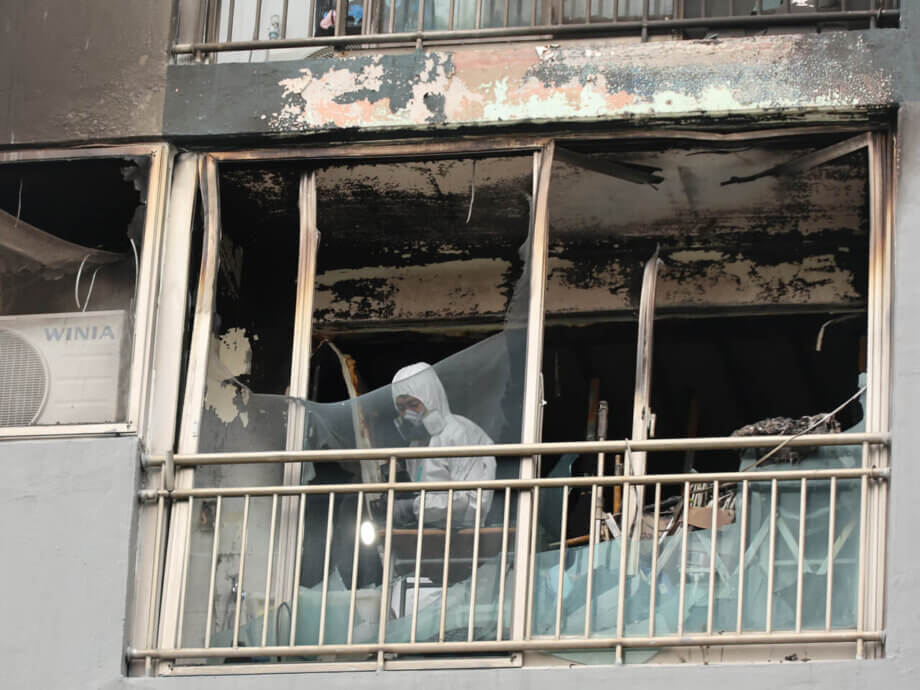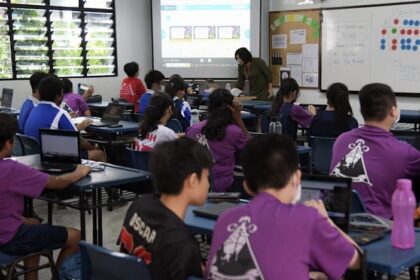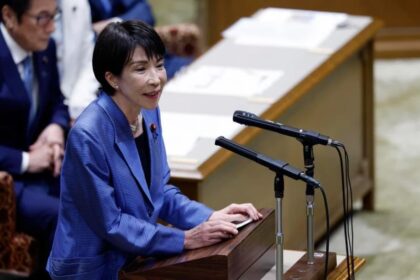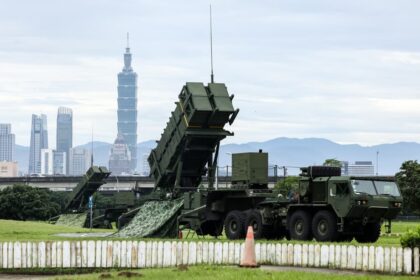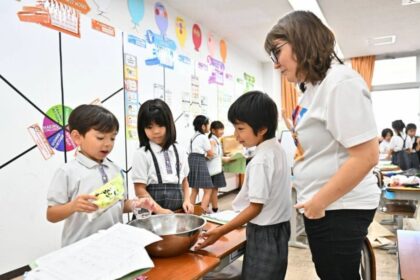Tragedy Strikes: A Series of House Fires Exposes a National Dilemma
In recent months, South Korea has been shaken by a series of deadly house fires that claimed the lives of young children left home alone. These tragedies have not only devastated families and communities but have also reignited a national debate over whether the country should introduce laws to prevent children from being left unsupervised at home. The issue is complex, touching on economic realities, cultural attitudes, and the adequacy of public support systems for working families.
- Tragedy Strikes: A Series of House Fires Exposes a National Dilemma
- How Widespread Is the Problem?
- Why Are So Many Children Left Alone?
- Cultural Attitudes and the Role of Family
- Calls for Legal Reform: Prevention or Punishment?
- The Limits of Legislation: The Need for Broader Support
- Changing Parental Roles and Societal Expectations
- Public Outcry and the Path Forward
- In Summary
On a late June night in Gijang-gun, Busan, two sisters, aged 8 and 6, died in a fire that broke out in their sixth-floor apartment. Authorities believe the blaze started with an electrical malfunction near a standing air conditioner. Their parents, who were working late at their restaurant, returned to find their home in ruins and their daughters gone. Just nine days earlier, two other sisters, aged 10 and 7, perished in a similar fire in the same city while their parents were out working early morning shifts as cleaners. Four months before that, a 12-year-old girl died in Incheon while home alone as her parents worked and attended medical appointments.
These incidents have left communities in mourning and have prompted urgent calls for legislative action. Kim Hyun-ok, a neighbor of the Busan family, expressed the collective grief and frustration:
“Everyone knows the family. The parents have been running a restaurant here for years. My heart aches when I think about those little girls trapped in the fire. They were just trying to make ends meet, like any other parents.”
But beyond the heartbreak lies a deeper question: Should South Korea, like some other countries, make it illegal to leave young children home alone?
How Widespread Is the Problem?
Statistics reveal that the home, often considered a sanctuary, is the site of nearly half of all child safety incidents in South Korea. According to the National Fire Agency, between 2021 and 2023, 50,906 out of 108,759 reported child safety incidents occurred at home, far outnumbering those at schools or other public places. A 2020 survey by the Korea Institute for Health and Social Affairs found that 23.1% of elementary school students nationwide spent time alone at home after school, a figure that underscores the scale of the issue.
Further data from the Ministry of Gender Equality and Family shows that among elementary school parents, 38.3% left their children alone for an average of nearly five hours daily. For middle and high school students, the rate was even higher, with 72.3% left unsupervised for over five hours a day. These numbers reflect the reality for many dual-income and single-parent households, where economic necessity often leaves no alternative but to leave children unattended.
Despite the frequency of such situations, South Korea currently has no law prohibiting parents from leaving their children home alone. This stands in contrast to countries like the United States, where leaving a child unsupervised can be considered neglect and is subject to legal penalties. For example, Maryland prohibits leaving children under 8 alone, and Illinois sets the minimum age at 14.
Why Are So Many Children Left Alone?
The reasons are rooted in both economic and social factors. South Korea’s rapid economic development has led to a rise in dual-income families, with both parents often needing to work long hours to make ends meet. The cost of living, especially in urban centers, is high, and affordable childcare options are limited. After-school programs and public childcare centers exist, but demand far outstrips supply, and many programs have strict income-based eligibility requirements.
For families who do not qualify for public support, private options such as cram schools (hagwons) or babysitters can be prohibitively expensive. As a result, many parents, especially those in low-income or single-parent households, have little choice but to leave their children at home unsupervised.
Choi Seok-hyun, director of the Good Maum Center, a non-governmental organization offering psychological support to families, warns of the risks:
“Some parents would think that leaving their children [home alone] would not cause serious problems. But if children are left alone for a prolonged period, they are more likely to go astray and their health tends to deteriorate.”
Children left alone often resort to unhealthy eating habits, excessive screen time, and may experience emotional or psychological distress. Studies from Japan, where similar cultural attitudes prevail, have even linked being left home alone to increased risks of health issues such as dental caries, due to unsupervised snacking and poor oral hygiene.
Cultural Attitudes and the Role of Family
South Korea’s approach to childcare is deeply influenced by cultural norms that view child-rearing as a private family matter. Public intervention in family affairs is often seen as intrusive, and there is a longstanding reluctance to legislate what happens within the home. This perspective has contributed to the lack of legal guidelines on the minimum age at which children can be left unsupervised.
Traditionally, extended families provided a support network for childcare, but demographic changes have eroded this safety net. The rise of nuclear families, urbanization, and declining birth rates mean that many parents now lack the support of grandparents or other relatives. According to Bloomberg, nearly 40% of South Koreans now live alone, and the country faces one of the world’s lowest fertility rates. These demographic shifts have left young families increasingly isolated and without traditional sources of help.
Despite these changes, societal expectations have not fully adapted. Many parents, especially mothers, still face stigma if they are perceived as neglecting their children, even as economic pressures force them to work outside the home. Meanwhile, the government has focused more on public safety measures—such as laws requiring school bus drivers to check for sleeping children—than on regulating what happens inside private homes.
Calls for Legal Reform: Prevention or Punishment?
The recent tragedies have sparked renewed calls for legislation to protect children left home alone. Legal experts and child advocates argue that clear guidelines are needed to prevent further loss of life. Jeon Min-kyeong, an attorney at the law firm Onyul, explains:
“Legislation that clearly defines the minimum age at which children can be left alone—along with reasonable exceptions—could serve as a meaningful supplement to existing laws. However, if such a law is introduced, a key concern is that it could place additional burdens on families with limited caregiving resources, such as low-income households, single-parent families, and those where grandparents are primary caregivers. Therefore, legal penalties should be applied with caution.”
Many experts emphasize that the goal of any new law should be prevention, not punishment. Rather than criminalizing parents who are already struggling, the focus should be on expanding public support systems—such as after-school programs, emergency childcare services, and local child welfare centers—to provide families with viable alternatives to leaving children alone.
International comparisons highlight the potential benefits of such an approach. In the United States and parts of Europe, laws prohibiting leaving young children home alone are often paired with robust social services and community support. These measures not only protect children but also help parents balance work and family responsibilities.
The Limits of Legislation: The Need for Broader Support
While legal reform is an important step, experts caution that laws alone cannot solve the underlying issues. South Korea’s childcare infrastructure remains underdeveloped compared to other advanced economies. Public after-school programs are oversubscribed, and many working parents are unable to access affordable care due to income thresholds or limited capacity.
Efforts to expand public childcare have made some progress. The Ministry of Education has announced plans to increase the number of after-school care programs, especially for first- and second-grade students. However, these initiatives have yet to meet the full demand, and older children are often left out of such programs.
Moreover, the privatization of many childcare services has created disparities based on income and location. Wealthier families can afford private tutors, extracurricular activities, and babysitters, while low-income families are left with few options. This inequality is further exacerbated by South Korea’s rapidly aging population and shrinking workforce, which place additional strains on social services and family support networks.
Changing Parental Roles and Societal Expectations
Amid these challenges, there are signs of changing attitudes toward parenting and gender roles. More fathers are taking paternity leave and becoming actively involved in childcare, reflecting a gradual shift away from traditional Confucian norms that assigned child-rearing solely to mothers. According to the Ministry of Employment and Labor, nearly 29% of those taking paid parental leave in 2022 were men, up from just 8.5% in 2016.
Popular media, such as the television program “The Return of Superman,” which features celebrity fathers caring for their children alone, has helped normalize the idea of shared parenting responsibilities. Experts believe that greater involvement by fathers could help alleviate some of the pressures on working mothers and encourage more equitable sharing of childcare duties.
However, these changes are still in their early stages, and many families continue to struggle with balancing work and family life. The lack of comprehensive public support means that, for now, the burden of childcare falls disproportionately on parents, especially those with limited resources.
Public Outcry and the Path Forward
The recent house fires have galvanized public opinion and brought the issue of child safety to the forefront of national debate. Advocates argue that the safety of children is not just a private matter but a collective societal responsibility. The tragedies have prompted a collective reckoning, forcing South Korea to confront the gaps in its social safety net and the need for a more robust public response.
As the country debates potential legal reforms, there is growing recognition that any solution must be multifaceted. Laws setting minimum ages for children to be left alone could provide clear guidelines and help prevent future tragedies, but they must be accompanied by expanded public childcare services, targeted support for vulnerable families, and efforts to address the root causes of economic insecurity.
Ultimately, the goal is to ensure that no child is left unprotected in the very place that should offer them the greatest safety—their own home. As South Korea grapples with demographic change, economic pressures, and evolving family structures, the challenge will be to build a system that supports both parents and children, balancing the demands of modern life with the fundamental right of every child to a secure and nurturing environment.
In Summary
- Recent deadly house fires involving children left home alone have reignited debate in South Korea over the need for laws prohibiting the practice.
- Nearly half of all child safety incidents in South Korea occur at home, and a significant proportion of elementary students spend time alone after school due to parents’ work obligations.
- There is currently no law in South Korea banning parents from leaving children home alone, unlike in some Western countries.
- Economic necessity, limited public childcare options, and cultural attitudes contribute to the prevalence of children being left unsupervised.
- Experts and legal professionals advocate for preventive legislation paired with expanded public support, rather than punitive measures against struggling parents.
- Demographic changes and evolving family structures have eroded traditional support networks, increasing the need for public intervention.
- Efforts to expand after-school programs and normalize shared parenting roles are underway but have yet to fully address the problem.
- The tragedies have sparked a national conversation about balancing economic realities with child safety and the collective responsibility to protect vulnerable children.


